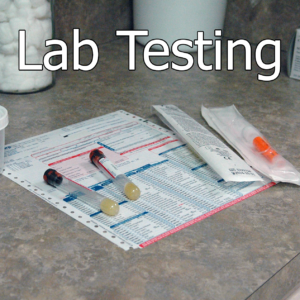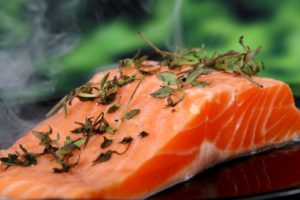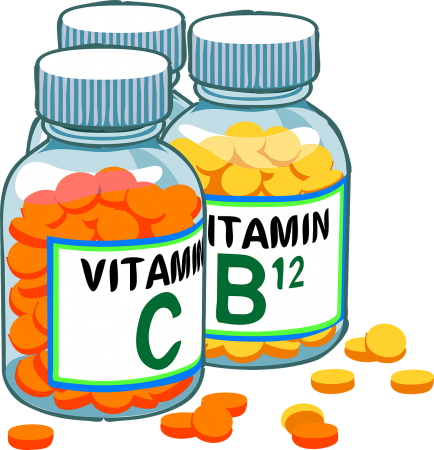Why Your Homocysteine Lab Results Matter
Homocysteine is a naturally occurring amino acid that is produced as part of the body’s methylation process and is synthesized from methionine, an essential amino acid. Thus, homocysteine cannot be obtained from the diet but instead has to be biosynthesized from methionine in a multi- step process that occurs in every cell in your body!
Having too high or too low homocysteine levels on blood tests can indicate some underlying issues. The metabolism of homocysteine relies on cofactors that are needed in the methylation cycle. This includes B12, folate and B6 which if you are low in these can be associated with an elevated homocysteine.
The good news is that if your homocysteine levels are too low or too high, there are dietary and supplemental ways to support a healthy homocysteine level in the body.
High Homocysteine
Having elevated lab markers for homocysteine is more common than having low levels. You want to pay attention to this maker because it is an indicator of an inflammatory process in the body. While western medicine ranges for homocysteine are wide, it is possible that ranges above 6.3 umol/L can increase your risk for cardiovascular disease.
Causes of Elevated Homocysteine levels
- Poor diet, Standard American Diet
- Vitamin B deficiencies
- Smoking
- High coffee intake
- Excessive alcohol intake
- Some medications such as PPI’s
- Diabetes
- RA
- Low thyroid function
Impact of Not Addressing Elevated Homocysteine levels
- Alzheimer’s, dementia
- Declining memory, poor memory, poor concentration
- Lowered mood, depression
- Infertility, miscarriage
- Migraines
- Increased risk for diabetes and osteoporosis
- Oxidation, free radical damage, cellular damage-which leads to disease, strokes, cancer, autoimmune conditions
- CVD, heart attacks, stroke
What to Do If Your Homocysteine Levels Are Elevated
Identify the cause!
It is usually easier to figure out what is causing your elevated homocysteine than it is to figure out what is causing low homocysteine.
Western medicine will tend to flag homocysteine as high when it reaches 15 . In my opinion, this is already too late. You want to address it before it gets this high and too much damage is already done. One study on 11,846 people showed the risk of stroke increased when homocysteine reached 11 umol/L, thus at 11 is too high. (Please realize, that I am a holistic nutritionist, not a doctor, and thus I am not treating, curing nor diagnosing but looking at lab markers so that we can support your body with food, diet, lifestyle and supplemental changes.)
The first thing to do is to look at your diet and see if it is an inflammatory one. Are you eating out often, eating packaged foods, takeout, frozen meals, processed foods, juices, foods with fake sugars, foods high in corn, soy and gluten, very little in the way of vegetables, leafy greens and whole fruits? It is always helpful to keep a food log for a few days as it can be very eye opening. Also, note in your food log how much alcohol you are consuming as many don’t realize how much they drink.
Are you a heavy coffee drinker? One to two cups in the a.m. is usually fine but are you drinking coffee throughout the day? Do you NEED coffee to get through your day?
You can be deficient in B vitamins if you have a MTHFR mutation. (more on MTHFR can be found in this post) You can ask your doctor to test you for MTHFR or locate it in your raw data of 23andme.com if you have done the genetic testing. If you do have a MTHFR mutation, don’t take just a folate or a just a B12 supplement which many do. You want a blend that contains needed cofactors along with B12 in the right form, betaine, B6 and B2. You also want to avoid folic acid, the synthetic form of folate. Read my post on methylation as just because you have a MTHFR mutation, doesn’t always mean you need to supplement. For instance, for you getting your homocstyeine level reduced, it may just be a matter of adding in more leafy greens and vegetables into the diet or reducing the amount of coffee or alcohol you drink.
When under chronic stress, your body will use up your B vitamins more readily. If you are a vegan or vegetarian, you may be low in B12. Also, if you are relying on fortified and enriched foods for your nutrients, you may be getting them in a poor form that your body cannot absorb and utilize.
While you are getting tested for MTHFR ask for a full thyroid panel as well, not just the TSH but the FULL panel. Your doctor knows what a full panel entails and should run it for you if your homocysteine is high. Nutritionists and naturopaths can also order tests for you if your doctor chooses not to run these tests.
What is Methionine And Why Should I Care?
Methionine is an amino acid that comes from your food, primarily from meat, eggs, fish, chicken, seeds, nuts and some vegetables. Methionine is activated to SAM (s-adenosylmethionine) by the enzyme called methionine adenosyl transferase. Circulating homocysteine is typically kept low by two pathways-a B12 and folate dependent re-methylation pathway that regenerates methionine or a P5P (B6, PLP) dependent trans-sulphuration pathway that converts homocysteine into cysteine.
If the biochemical process is not working properly, it can lead to cell damage and disease. Often it is due to the lack of the needed B vitamins and other cofactors for the cycle to take place.
Like many other blood tests, you will benefit from doing an overnight fast before drawing blood. This is because, if you eat any methionine containing foods before the blood draw, it may show, inaccurately a high homocysteine result.
Vegans and vegetarians may benefit from supplementation or making sure to eat non-meat sources that contain methionine such as seeds and nuts.
Lab Markers
The lab range for homocysteine often is 0-15 umol/L. Thankfully I am seeing some labs now start the range at 5 umol/L. Your body needs to make homocysteine and it is a building block for glutathione (your master antioxidant) and SAMe (a methyl donor) so why would you ever want the number at zero? Bottom line-you don’t ever want it at zero. But you also don’t want it at 15 either. Just like every other number on lab work, balance is best, not highs or lows. Your body is always striving for balance. The range I like to see is narrower than what is on most lab tests, and again, this is so we can address your health before it gets to the point of no return. (again I don’t diagnose when I look at your labs)
Is Your Homocysteine low?
You probably wouldn’t even know if it is too low. Homocysteine is a blood marker for inflammation so you may think low is really good-in the lower range is good but not too low!
Most of the data and research is on homocysteine levels that are too high and as a result a marker and risk factor for CVD and strokes. In fact, the data is very limited on low homocysteine and I cannot find anything in any of my text books either on low homocysteine.
But like with everything else in the body, we need balance, not highs and not lows so why should homocysteine be any different? The very limited data that does exist (I hope more info on this will surface) shows a concern when the homocysteine level is too low. You would think that there would be more studies on this, but western medicine seems to have this narrow view that high is bad and low is great. (and if there is no money to be made, no drug to suggest, then there is no motivation for funding on these type of studies).
The range on most lab work for homocysteine is 0-15 umol/L. This is one of those markers that you want balance and never at zero! (and never at 15 either). Most of the data is on high homocysteine, but low can be just as problematic. The ideal sweet spot for homocysteine is 7.5. From what I have read, below 6 is too low and others say below 5 is a concern and needs to be looked at further so for now I would say the ideal small range for homocysteine is 5-7.5 umol/L.
What Happens When Your Homocysteine Number is Too Low?
When this number is too low it can reduce the body’s ability to produce glutathione (GSH) and SAMe. Both play critical roles in the methylation cycle.
A low number may be suggestive of the body’s inability to make enough homocysteine. When this happens, methylation slows down and can lead to health issues.
Methylation is a biochemical process that happens in every cell in the body. When a methyl group is added to a compound, this can create, convert or alter compounds within our cells.
We use methylation for neurotransmitter production, healthy immune cells, fat metabolism, cell energy, detox, to turn on good genes, to turn off bad genes (gene expression), eye health, and much more.
Low homocysteine can also indicate low glutathione production. GSH is your master antioxidant and plays a role in detox and cleaning up free radicals in the body. If GSH is low, you may have toxic overload, your B vitamins may not be getting to where they need to be, and you may have fatigue since you need GSH in the mitochondria of the cells to produce ATP.
In addition to low GSH, it may mean there is less SAMe being produced which also has a role in the methylation cycle. A lack of SAMe can impact mood and lead to depression.
Other causes of low homocysteine include a poor diet, a vegetarian diet (low intake of foods containing methionine and cysteine), poor digestion, low stomach acid, and possibly too much in the way of methylated supplements. It can also mean you are taking too many methylated B vitamins or that you have oxidative stress (too many free radicals).
You should only need up to 1 gram of methyl folate if you have MTHFR mutations. If you are relying on a higher dose, you may need to look elsewhere as to why you need to take so much to feel better.
Why Should I Ask My Doctor For the Homocysteine Test?
Homocysteine should always be tested on lab work but typically is not unless you ask your doctor for this test. If you have any mental health issues and fatigue and low energy, you need to be asking for this test (also if you have any cholesterol, heart issues, CVD, thryoid issues).
The problem is, say you go to your doctor because you have depression, they run your labs, and then tell you that everything is normal because they are only looking at what the lab flagged out of range. And the other issue is that they may not be familiar with low homocysteine at all since it is suggested that it occurs in only 1% of the population. We know that too much can be toxic and lead to CVD but too little can result in metabolic problems.
Homocysteine will not be flagged if it is too low. In fact, there are other lab markers as well that western medicine often misses and that can be related to mental health issues. (to be clear, when I look at your labs, I do not diagnose, treat or cure but rather looking for “suggestions” and helping to support your body with dietary and supplemental changes).
Methionine is the amino acid that helps you produce SAMe which is your #1 methyl donor. SAMe supports over 200 reactions in the body and is the second most important compound in the body, after making ATP. Those who tend to be low in methionine are those on a vegetarian diet, those who are fast eaters, drink a lot of fluids with meals, have digestive issues and/or take antacids.
Signs and Symptoms of Low Homocysteine
- Chronic gut infections
- Inflammation
- Dizziness
- Low blood pressure
- Fatigue
- Nausea
- Brain fog
- Headaches
- Irritability
- Anxiety
- Insomnia
- Low zinc, high copper
- Low vitamin B6
- Feel worse after taking B6
- Pyroluria
- Oxalate intolerance
- Gut pain
- Bladder pain
- Vulvodynia
- Chronic UTI’s
- Sulfur intolerance
- Histamine intolerance
(Please not that the s/s is sourced from a blog post by a naturopath but I cannot find any links to where her information was sourced so I take this with a grain of salt until I have more data on this)
What to Eat for Low Homocysteine Levels
You want to include protein rich foods into the diet to support homocysteine levels, glutathione and the methylation cycle.
Some foods that contain methionine include salmon, beef, chicken, eggs, goats’ milk, adzuki beans, sesame seeds, pumpkin seeds, nuts and oats.
As you can see from below, if you have low homocysteine, you are better off eating non-vegetarian protein sources that are rich in methionine. You may need supplementation short term depending on the diet.
Methionine Amounts (The recommended daily intake is 6.7 mg per pound) thus for instance, if I ate 3 ounces of beef I would meet my methionine needs for the day.
Brazil nuts (315 mg. per ounce), Beef and roast beef (834 mg, per 3 ounces), parmesan cheese (96 mg. per one inch cube), turkey or chicken breast (786 per 3 ounces), pork (725 per three ounces), tuna cooked (710 per 3 ounces), roasted soybeans (150 per ounce), hard boiled eggs (196 mg per egg), plain yogurt, (414 per cup), white beans, (261 mg. per cup).
Cysteine Amounts (The recommended daily intake is 1.9 mg per pound but you may need more than the RDI): roasted soybeans (179 mg per ounce), beef and lamb (391 mg per 3 ounces), sunflower seeds (126 mg. per ounce), chicken and turkey (360 per 3 ounces), oats (318 mg. per one half cup), pork tenderloin, (330 mg per three ounces), clams cooked (285 mg per three ounces), eggs (146 mg per hard boiled egg), split peas (249 mg per one cup).
Glutathione (GSH): Your body makes its own glutathione however those who have low homocysteine levels may also be low in glutathione and not producing enough. You can boost your GSH levels by consuming sulfur rich foods, undenatured grass fed whey protein powder (if no sensitivity), and exercise. You may need to supplement and glutathione in liposomal form is best.
Some suggest that another amino acid, Taurine, may also be needed. Highest taurine amounts can be found in shellfish, especially scallops, mussels and clams. Also, turkey, chicken, beef, lamb, and eggs.
What to do if you have low Homocysteine
- Make sure you are eating enough protein! Take your ideal body weight, divide it in half and consume that many grams of protein. This is an estimate, and this can vary widely, for the sick and injured, growing, pregnant, those who work out etc.-work with a professional to find how much protein you need.
- Consume sulfur rich foods. (onions, garlic, broccoli, cabbage, Brussel sprouts)
- Poor digestion, not breaking down proteins. Chew each bite of food 15-20 times-yes, I said for each bite!
- Don’t consume fluids with your meals-if so, you dilute your body’s digestive enzymes and they have more difficulty breaking down your food. You may need digestive enzymes and/or a stomach acid supplement.
- Take liposomal GSH and start with very low dose such as a drop and work your way up based on how you feel typically up to one teaspoon daily without food. You may need a GSH product with some co-factors as well.
- You may need an Adaptogenic herb to support the body’s stress levels until your homocysteine reaches a healthy level.
- Exercise! Get moving.
Working to raise your homocysteine levels can be tricky and it is best to work with a health professional.
Bottom Line: Homocysteine blood test should be part of the standard blood work because of the rate of CVD and depression we have now in society, but sadly this test is not a standard test and so you will have to ask for it. If you are concerned with the results, work with a health professional that is familiar with addressing lab markers with diet and lifestyle modifications.
Sources
https://mthfrgenehealth.com/low-homocysteine-levels-making-you-sick/
https://mthfrsupport.com.au/2017/07/low-homocysteine-levels-what-are-the-consequences/
https://www.drbenlynch.com/low-homocysteine/
https://mthfrfertility.com/low-homocysteine-fertility/
https://www.beyondmthfr.com/mthfr-and-homocysteine-part-i/
https://mthfr.net/preventing-methylfolate-side-effects/2014/11/26
https://articles.mercola.com/vitamins-supplements/glutathione.aspx
https://www.ncbi.nlm.nih.gov/pmc/articles/PMC4566450/
https://www.joannekennedy.com.au/2019/01/23/high-low-homocysteine/
https://www.ncbi.nlm.nih.gov/pubmed/15159287
https://www.seekinghealth.com/media/improving-Patient-Outcomes-short-ver.pdf










Leave A Comment
You must be logged in to post a comment.